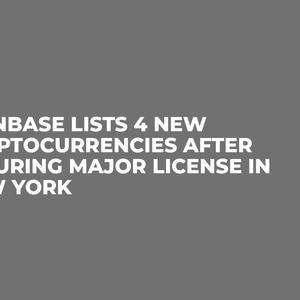AI Coding Tool Cursor Faces Backlash Over Pricing: An Unfortunate Lesson
5 min read
BitcoinWorld AI Coding Tool Cursor Faces Backlash Over Pricing: An Unfortunate Lesson In the fast-evolving world of technology, where artificial intelligence is rapidly transforming how we build and innovate, unexpected changes can cause significant ripples. For many in the cryptocurrency and broader tech community, AI coding environments have become indispensable. Recently, Cursor AI, a popular AI-powered coding environment, found itself at the center of a user uproar following poorly communicated pricing adjustments. This incident serves as a crucial reminder of the delicate balance between innovation, cost, and user trust in the AI space. Understanding Cursor AI’s Recent Pricing Shift Anysphere, the company behind Cursor, recently issued a public apology for a poorly handled update to its $20-per-month Pro plan. The CEO, Michael Truell, acknowledged that their communication was not clear enough, leading to frustration and unexpected costs for many users. The core of the issue stemmed from a June 16 update that fundamentally altered the Pro plan’s value proposition. Previously, Pro users enjoyed 500 fast responses from advanced AI models like those from OpenAI, Anthropic, and Google, followed by unlimited responses at a slower rate. The new model, however, shifted to a usage-based system: users now receive $20 worth of usage per month, billed at API rates. Once this $20 limit is reached, users must purchase additional credits to continue. This change, while seemingly straightforward, caught many off guard, particularly those who quickly consumed their allowance. Users took to social media to voice their complaints, reporting that their credits depleted rapidly, sometimes after just a few prompts, especially when utilizing popular and powerful models like Anthropic’s Claude. A significant point of contention was the unexpected additional charges incurred by users who were unaware they would be billed extra if they exceeded the $20 limit and had not set a spend cap. Anysphere has committed to refunding these unexpectedly charged users and aims for greater clarity in future pricing changes. Only Cursor’s “auto mode,” which intelligently routes requests to AI models based on capacity, continues to offer unlimited usage for Pro users. Why Are Generative AI Models Getting More Expensive? The changes implemented by Cursor AI are not arbitrary; they reflect a broader trend in the industry. Truell explained that the pricing adjustment was necessary because newer, more advanced AI models can consume significantly more tokens per request, especially for longer, more complex tasks. This means that while AI is becoming more powerful, the cutting edge of generative AI performance remains expensive, and in some cases, is even increasing in cost. Consider Anthropic’s recently launched Claude Opus 4 model, which costs $15 per million input tokens and $75 per million output tokens. To put this in perspective, one million input tokens are roughly equivalent to 750,000 words. These figures are even higher than Google’s Gemini 2.5 Pro, which was considered its most expensive AI model at its April launch. OpenAI and Anthropic have also started charging enterprise customers for “priority” access to their AI models, adding another layer of premium cost for guaranteed reliable and high-speed performance. These escalating costs for foundational AI models are increasingly being passed down to the end-users of AI coding tools, impacting the overall AI pricing structure across the ecosystem. The Ripple Effect: AI Pricing Across Developer Tools Cursor is not an isolated case. The rising costs of underlying AI models are creating a ripple effect across the entire landscape of developer tools that integrate AI. Users of Replit, another widely used AI coding tool, also reported being caught off guard by recent pricing changes that made completing large AI-driven tasks more expensive. This indicates a growing industry-wide challenge: how to provide powerful AI capabilities without making them prohibitively expensive for individual developers and small teams. While the demand for AI-powered assistance in software development continues to surge, companies like Anysphere are grappling with the economics. They must balance offering state-of-the-art AI capabilities, which often come with high operational costs, against maintaining competitive and user-friendly subscription models. The tension between innovation and affordability is becoming a defining characteristic of the AI software market. Navigating the Dynamic AI Coding Landscape Despite these pricing hurdles, Cursor has achieved remarkable success, reportedly reaching over $500 million in Annual Recurring Revenue (ARR) primarily through its Pro plan subscriptions. However, its market position is now under intense pressure from the very AI providers it relies upon. For instance, Anthropic’s recently launched AI coding tool, Claude Code, has seen significant success with enterprises, boosting Anthropic’s ARR to $4 billion and likely attracting some users who might otherwise have chosen Cursor. In response, Cursor is actively working to maintain its competitive edge. Anysphere recently secured multi-year deals with major AI model providers like OpenAI, Anthropic, Google, and xAI. This strategy underpins their new $200-a-month Cursor Ultra plan, which offers very high rate limits for users requiring extensive AI assistance. While collaborations are crucial, the underlying pressure between AI coding tool developers and their foundational AI model providers appears to be intensifying, shaping the future of how developers access and pay for advanced AI capabilities. The Path Forward for AI Coding Tools The Cursor AI incident highlights a critical challenge for the entire AI industry: the need for transparent communication regarding pricing and usage. As AI models become more powerful and costly, the companies integrating them into user-facing products must find sustainable business models that do not alienate their user base. For developers, it means being more vigilant about understanding the true costs associated with AI-powered tools and setting appropriate spend limits. The future of AI coding will likely involve a dynamic interplay of innovation, competition, and evolving pricing strategies. While the benefits of AI in development are undeniable, ensuring equitable and predictable access to these powerful tools remains a key challenge that companies like Cursor must continuously address to maintain user trust and market leadership. To learn more about the latest AI market trends, explore our article on key developments shaping AI models features. This post AI Coding Tool Cursor Faces Backlash Over Pricing: An Unfortunate Lesson first appeared on BitcoinWorld and is written by Editorial Team

Source: Bitcoin World



